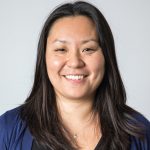I’m classically trained as a biologist but integrate engineering, material science, and mathematics to address the causes and consequences of morphological diversity in vertebrate musculoskeletal design, with a particular emphasis on amphibious vertebrate animals.
Education and professional training: My undergraduate education provided me with an Associate’s of Science degree in Biological Sciences from DeAnza College (2005) and a Bachelor’s of Science degree in Evolution, Ecology, and Biodiversity, with a minor in Avian Sciences from the University of California, Davis (2008). Next, I completed a Ph.D. in Biological Sciences at Clemson University (2014), under the advisement of Richard Blob. My dissertation was conducted on the comparative biomechanics of fins and limbs for terrestrial locomotion, with implications to the water-to-land transition in vertebrate evolution. My postdoctoral training included a research fellowship at the National Institute for Mathematical and Biological Synthesis (2014 – 2016) on the consequences of different methodological approaches for quantifying phenotypic selection, and a Marie Curie Research Fellowship at the Royal Veterinary College (2016 – 2017) with John Hutchinson to evaluate the evolution of bone strength in context to the evolutionary invasion of land by tetrapods. Afterwards, I had the pleasure of working at California State University, Long Beach, where I was an Assistant Professor of Biology from 2017 – 2019.
Current position: I am now an Assistant Professor at George Washington University, where I run a research team that works at the interface of biology and engineering to address broadscale questions related to the evolution and ecology of different vertebrate musculoskeletal designs and their consequences on locomotor performance under different biotic and abiotic environmental conditions.
Research interests: I have broad research interests and, consequently, will be posting information related to biomechanics, materials science and engineering, locomotion, feeding, natural selection, functional morphology, musculoskeletal modeling, morphometrics, and much more! Stay tuned!











